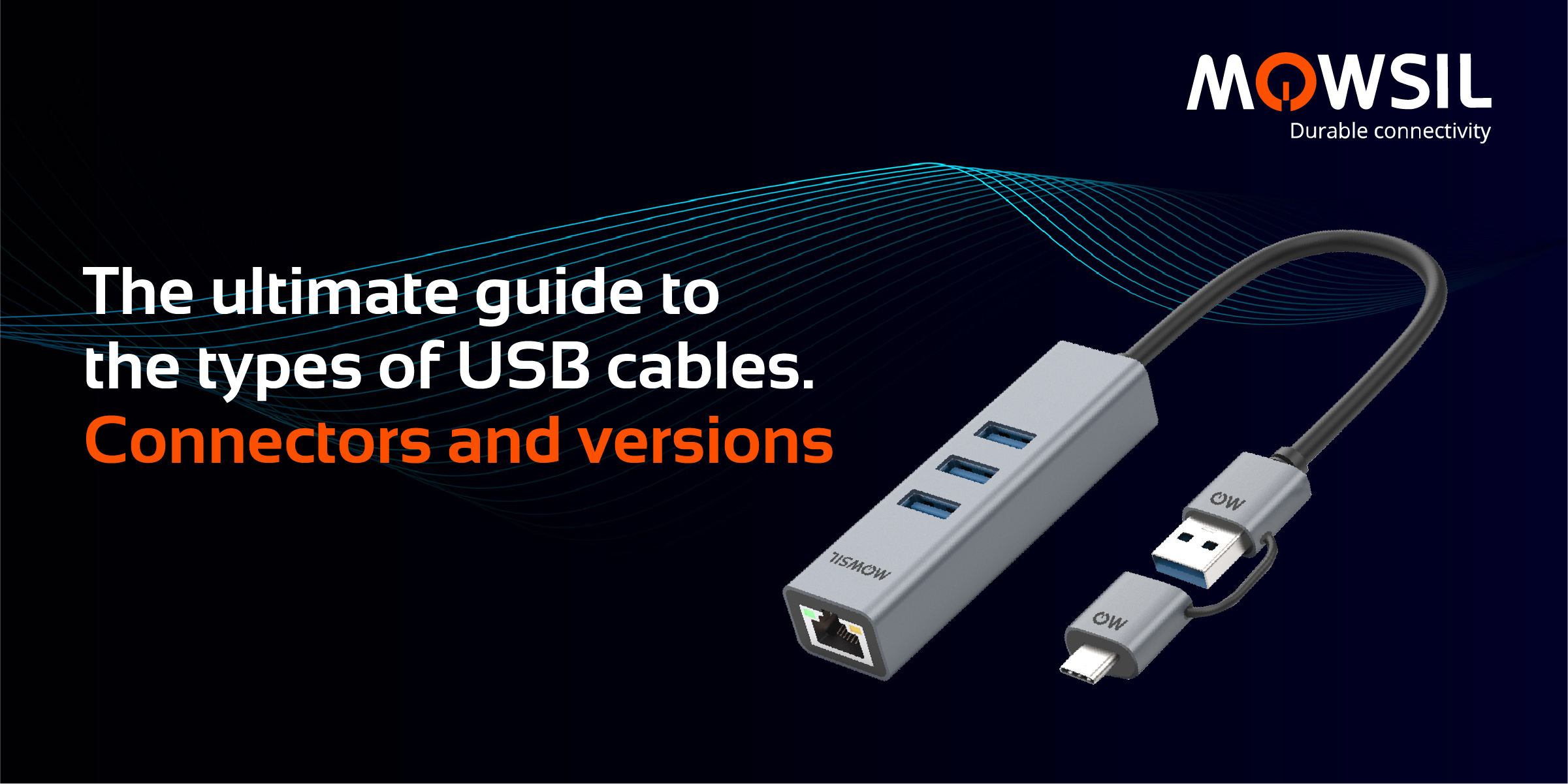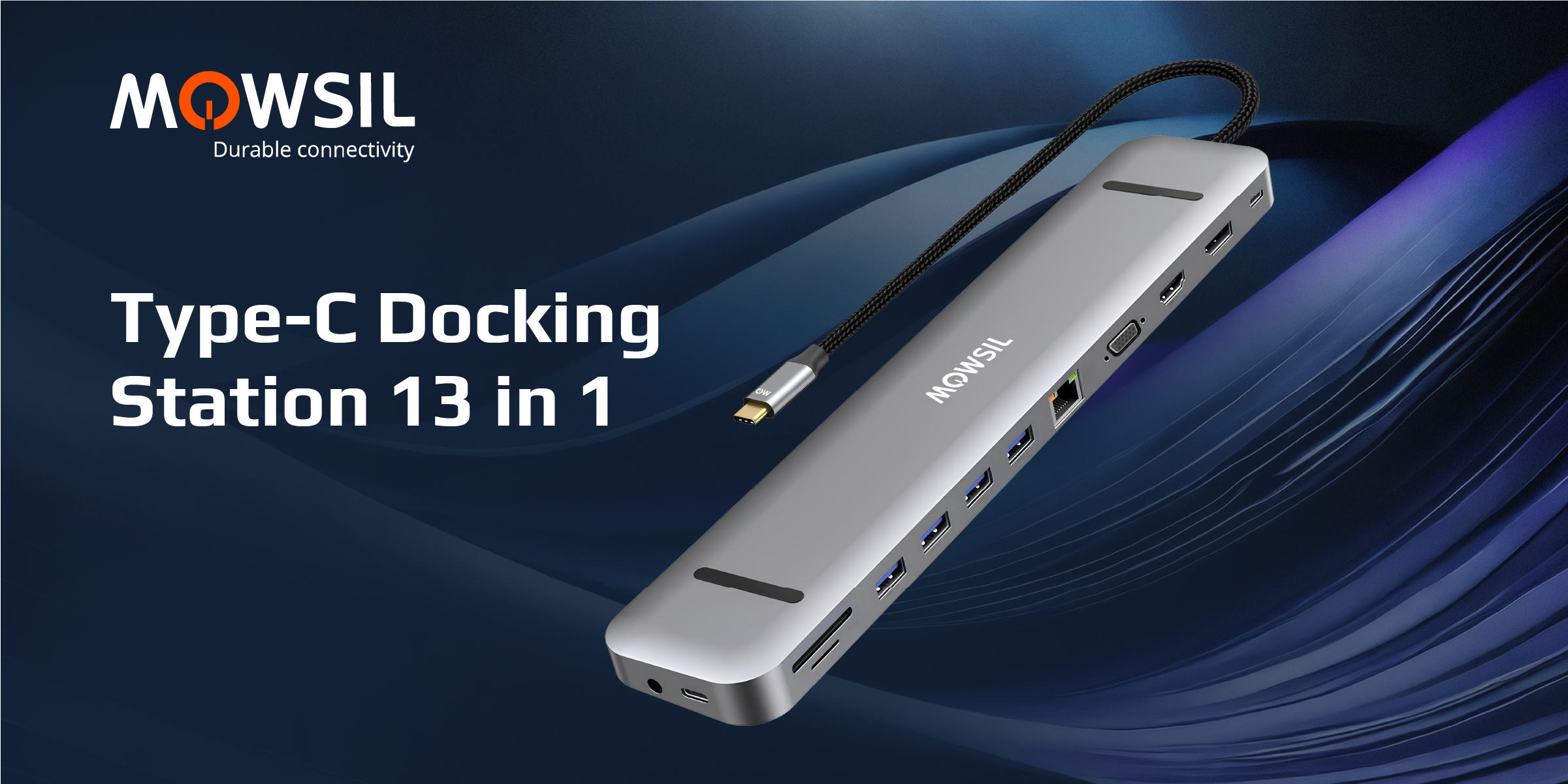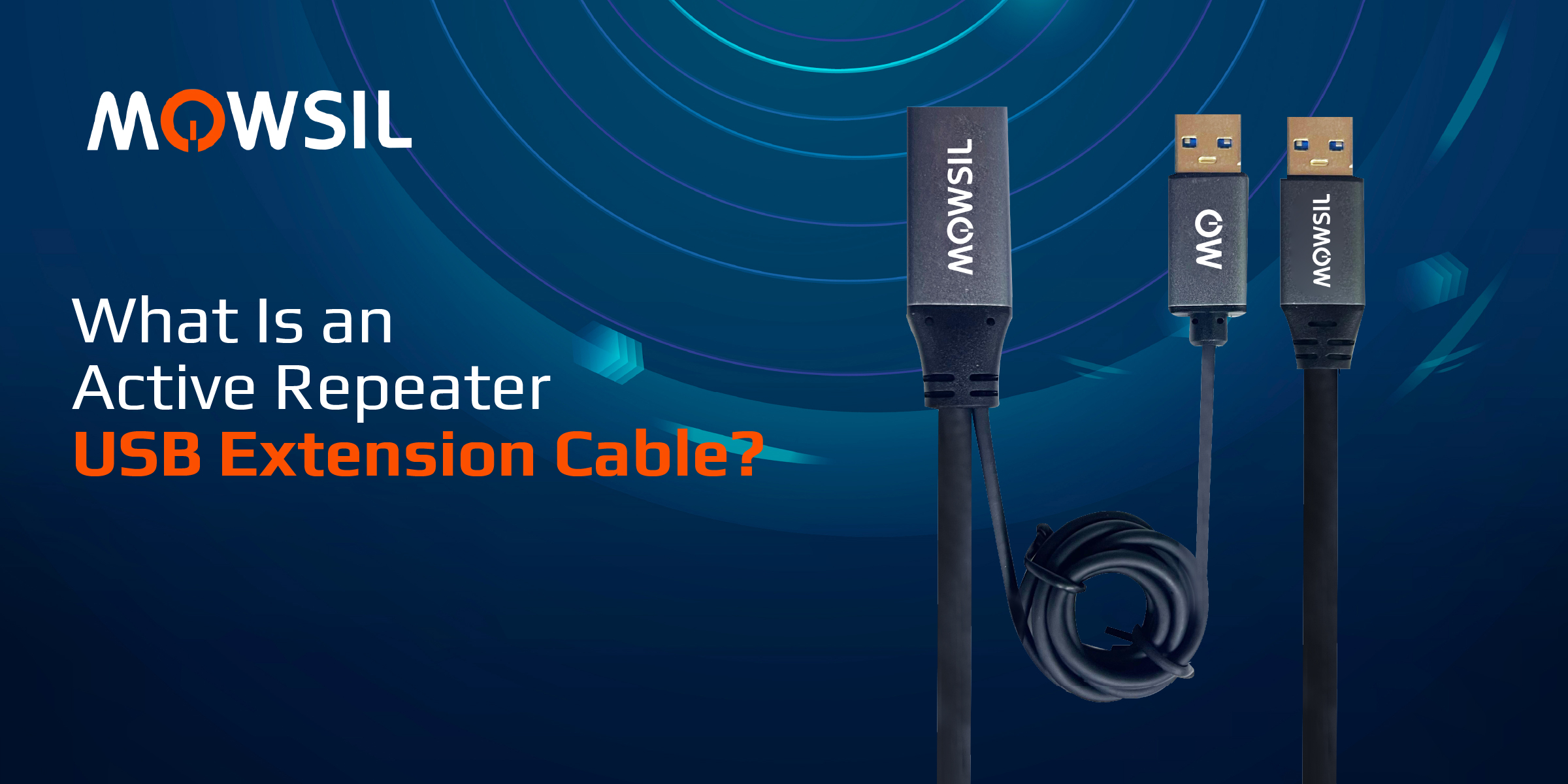Blogs
The Ultimate Guide to the Types of USB Cables. Connectors and Versions

USB cables are useful wires that connect our devices to power and allow us to transfer data. You may have noticed that there are several sorts of USB cords. These cables come in a variety of sorts and models, so it's important to grasp the distinctions. USB cables are generally divided into two categories: USB connectors and USB versions. Mowsil provides one of the best connectivity solutions in Dubai. With a variety of USB cables, we have connectivity solutions and products that don't compromise quality. Common USB Terms You Should Know Before we go into the many types of USB cables, it's important to understand some basic USB terms: Connector: The connector is at the end of a USB cable. It is a physical component that connects to a device's ports. Port: A port is similar to the socket that your USB cable plugs into on your devices. It resembles the slot used to insert a plug into a wall socket. Different devices use different types of USB cable ports to connect to USB cables. Type: The USB Type refers to the design or shape of the USB connector or port. It defines how the connector will fit into the port. These types of connections are made for different uses. Version: The USB version refers to the technology used to transport data over a USB cable. When you have a newer USB version, you may usually transfer data faster and may have access to extra capabilities. Types of USB Cables Distinguished by Connectors Now, let's look at the different sorts of USB cables based on their connectors. 1. USB Type-C (USB C): USB Type-C, usually known as USB-C, is a very adaptable and widely used USB connector. It's unique in that it works in either direction when plugged into a gadget. USB Type-C can transfer data swiftly and provide power to charge your devices. Many modern laptops, cell phones, and tablets use these types of USB cables. It's like a universal plug for all of your new gadgets! 2. Lightning Apple's Lightning connector is unique and exclusive to Apple gadgets such as iPhones, iPads, and iPods. It's tiny and provides a secure connection. However, it is not as general as USB Type-C, therefore it cannot be used on non-Apple devices. However, if you're in the Apple ecosystem, it's ideal for fast charging and data transfers. Lightning is a USB cable type that is only seen on Apple products. 3. USB Type-A (USB A) USB Type-A connectors, the iconic rectangular ports, are widespread in the technology industry. They serve an important role in connecting your computer to a variety of IT devices, allowing data transfer by USB 2.0 specifications. USB Type-A connectors are among the most common types of USB cables. These connectors are frequently encountered on computers and power adapters. 4. USB Type-B (USB B). USB Type-B connectors appear to be slightly different. They are either square or rectangular, with bevelled corners. They are widely found in devices such as printers, scanners, and some older external hard drives. What's interesting is that Type-B connections exist in three sizes: Standard-B, Mini-B, and Micro-B. As a result, these connectors are designed to connect specific types of equipment, such as a printer or scanner, to your computer. 5. Mini USB These connectors are smaller than regular Type-B connectors. They were once extremely prevalent, but their use has declined since the introduction of Micro USB and USB Type-C. Nonetheless, you can find Mini USB ports on some outdated gadgets and accessories. 6. Micro USB These connectors are significantly smaller and more compact than Mini USB. They can be found in many older Android smartphones, Bluetooth headphones, and other portable devices. However, keep in mind that they are gradually being replaced by the more adaptable USB Type-C in newer gadgets. USB Cables can be categorized according to their versions: USB cables can also be classified by the version of the USB standard that they support. Different versions have varying data transfer rates and capabilities. These are the primary USB versions. USB 1.0 The types of USB cables begin with USB 1.0. The first USB specification was introduced in 1996. It supported a maximum data transfer rate of 12 megabits per second (Mbps). While this may not appear to be particularly fast by today's standards, it was more than adequate for basic devices such as keyboards and mice, which were the primary focus back then. USB 1.1 Moving on to USB 1.1, which was introduced in 1998 as an enhancement to USB 1.0. It maintained the same data transfer rate of 12 Mbps while making some small improvements for better overall performance. These early standards influenced the development of several types of USB cables, laying the groundwork for eventual advances in the technology. USB 2.0 USB 2.0, also known as Hi-Speed USB, was introduced in 2000 and was a major deal at the time. It dramatically increased data transfer rates, reaching a peak of 480 megabits per second (Mbps). This may not be as fast as the newer types of USB cables available today, but it represented a significant improvement over the original USB 1.1, which was much slower. USB 3.0 Types of USB cables advanced significantly with the introduction of USB 3.0, also known as SuperSpeed USB, in 2008. It enabled lightning-fast data transfer speeds of up to 5 gigabits per second (Gbps). To put it simply, this technology enabled data transfer between devices substantially faster, almost ten times faster than the earlier USB 2.0. USB 3.1 USB 3.1, introduced in 2013, was a game changer in the USB universe. It provided lightning-fast data transmissions, reaching 10 gigabits per second (Gbps). To put it simply, it could transfer data between devices 20 times quicker than the earlier USB 2.0. However, speed was not its only trick. USB 3.1 introduced the convenient USB Type-C connector. USB 3.2 When it comes to types of USB cables, USB 3.2, which was released in 2008, marks a substantial advancement in data transfer capacity. It's similar to a speed boost for your computer's connections. It supports transmission rates of up to 20 Gbps, making it ideal for data-intensive jobs such as gaming and video editing. It's an excellent option if you require high-speed connectivity. USB 4 USB 4, the newest member of the USB cable family, was released in 2019. This one is a speed demon, with data transfer rates of up to 40 Gbps. It's not only speedy; it also includes high-end technologies like Thunderbolt 3. Many recent laptops and desktop computers include USB 4, which provides lightning-fast data transfer and top-notch communication. It's the top choice for individuals who want the fastest speeds and performance. Conclusion If you want to know the right USB that can meet your requirements, contact the best connectivity solutions provider, Mowsil for more.








